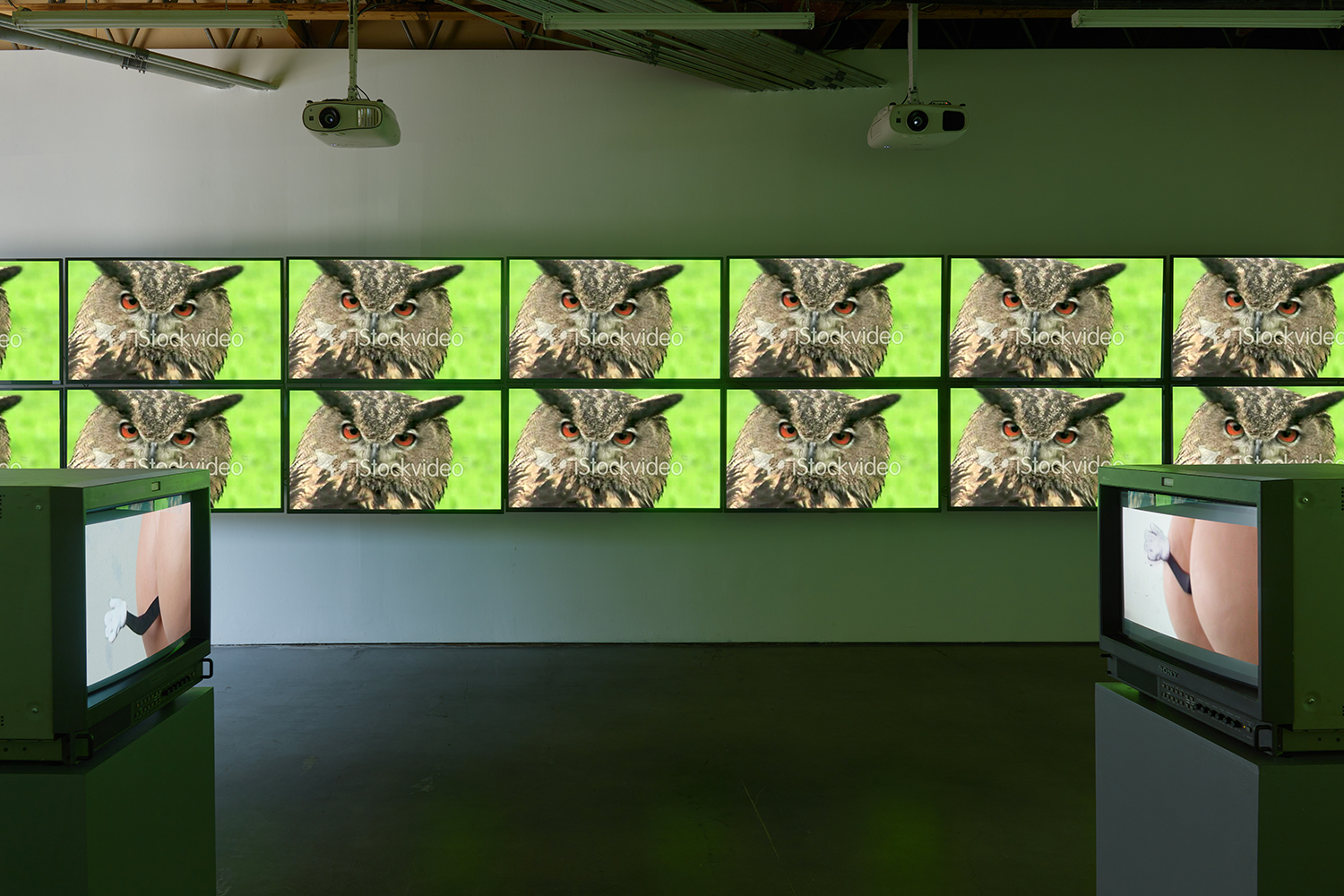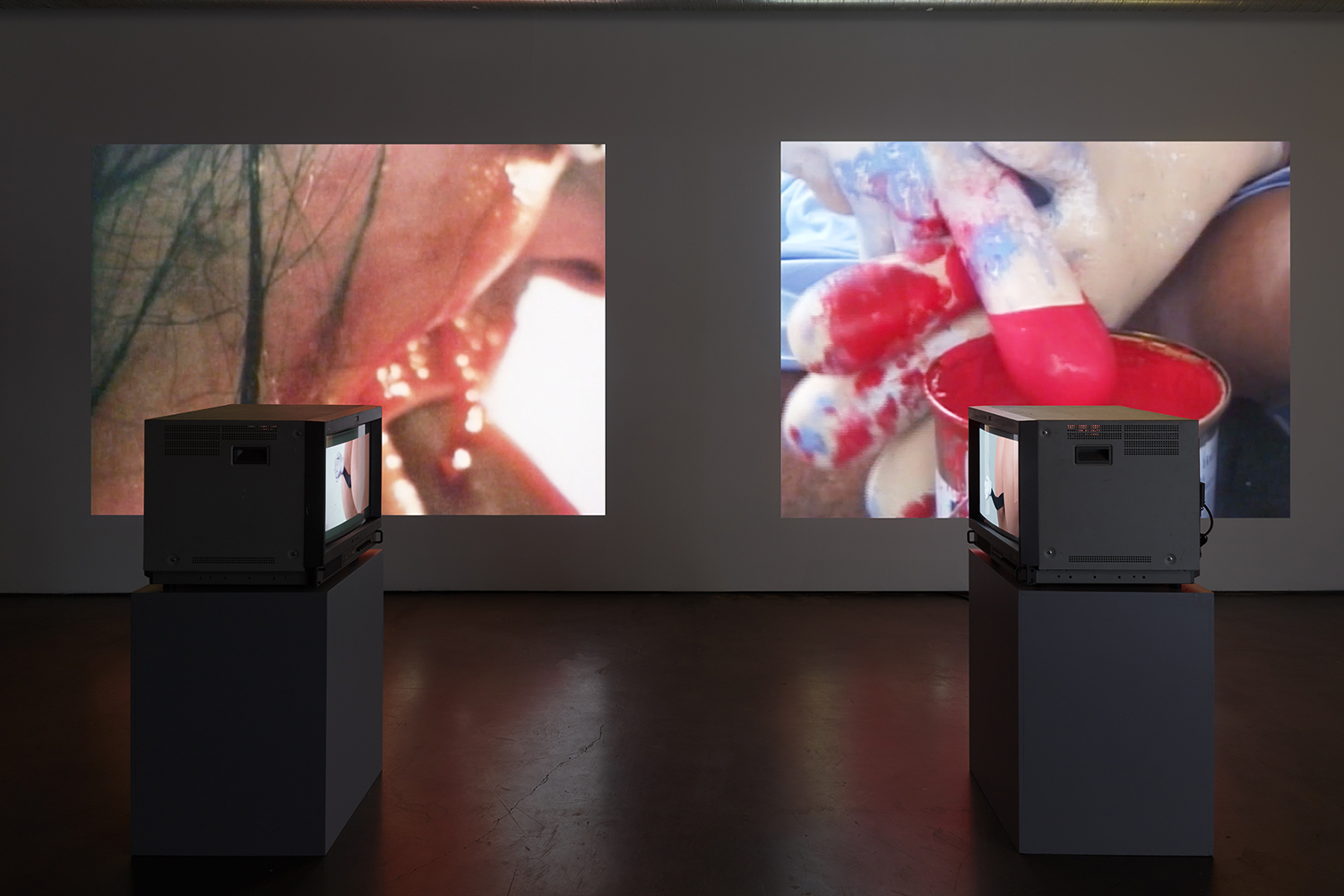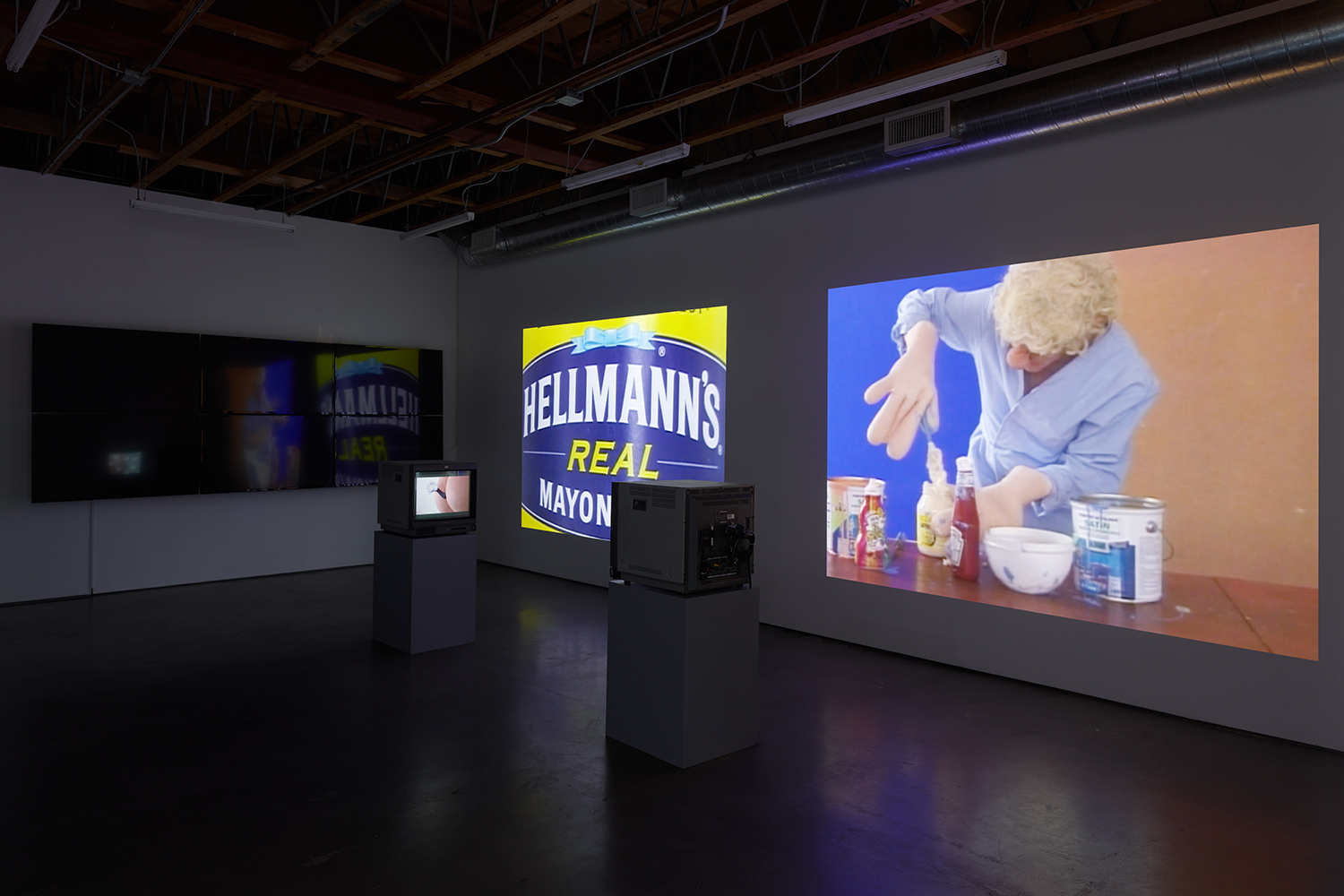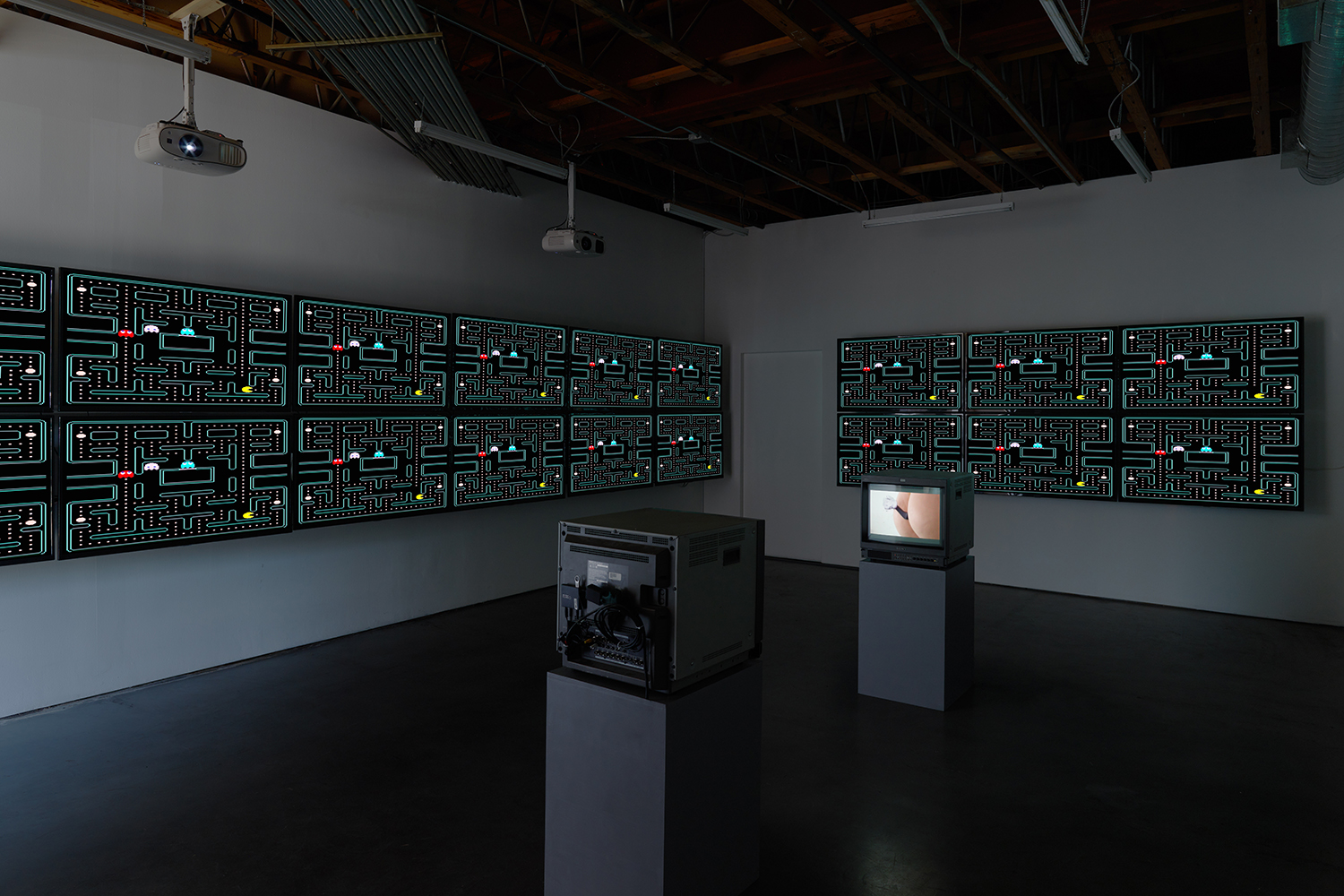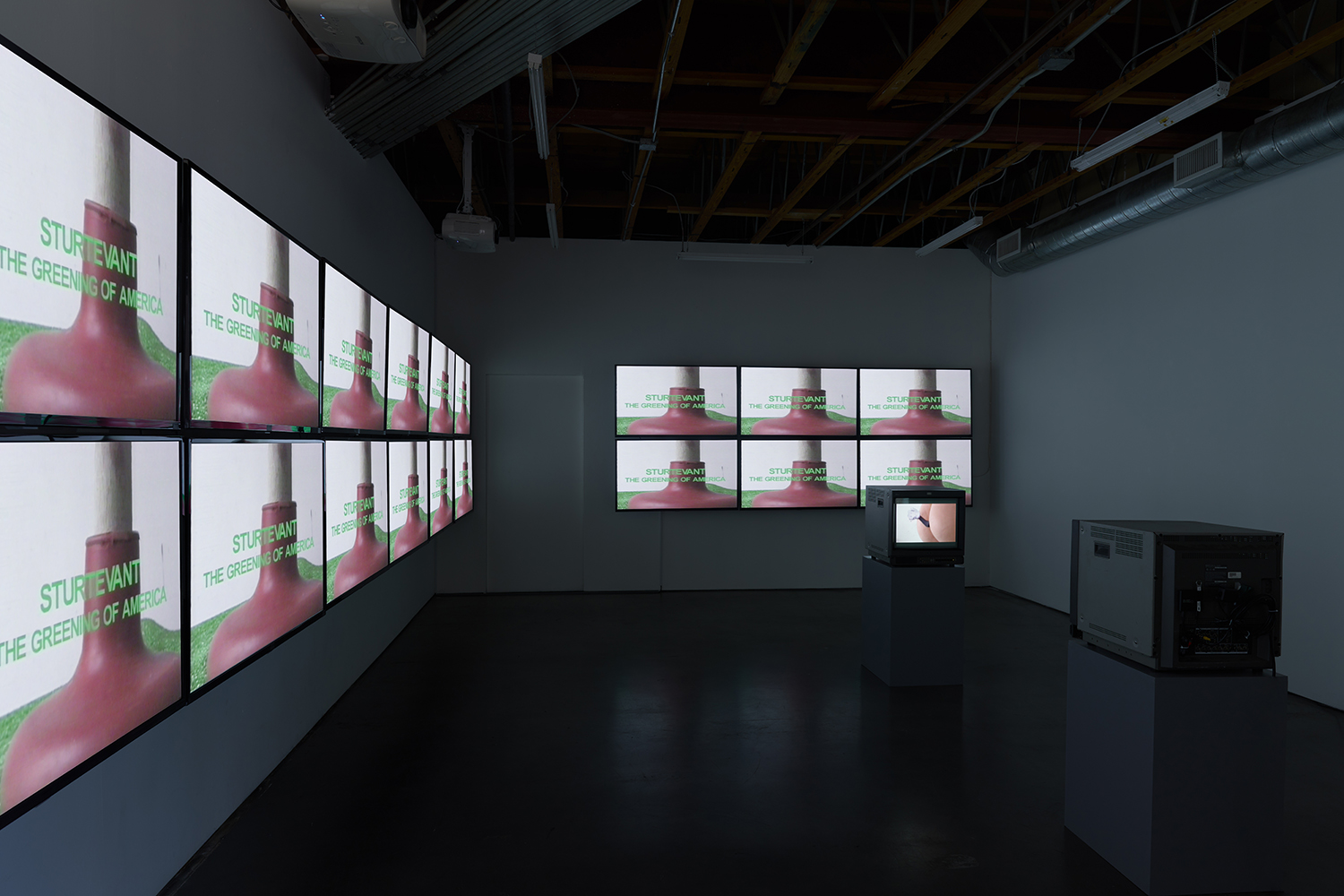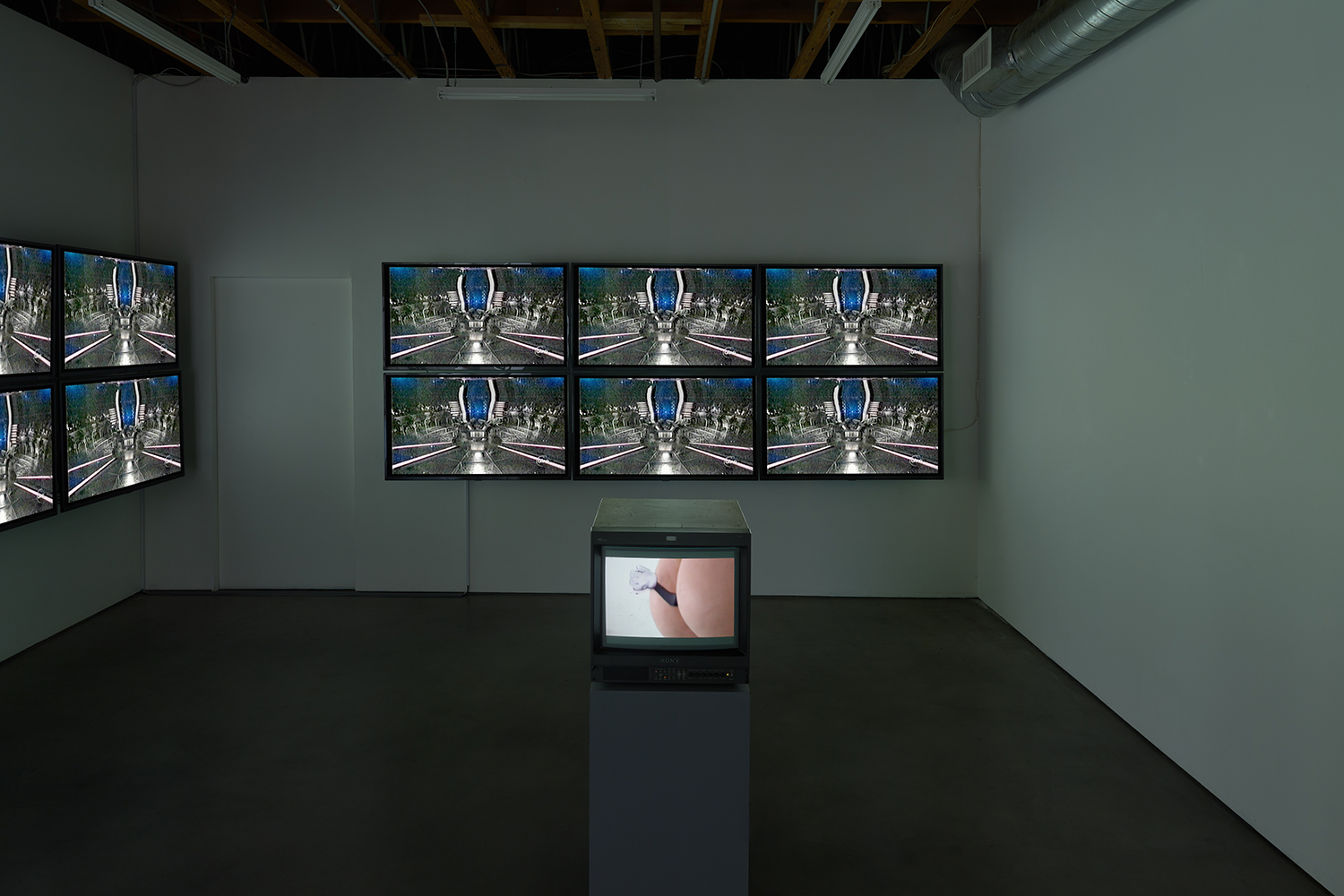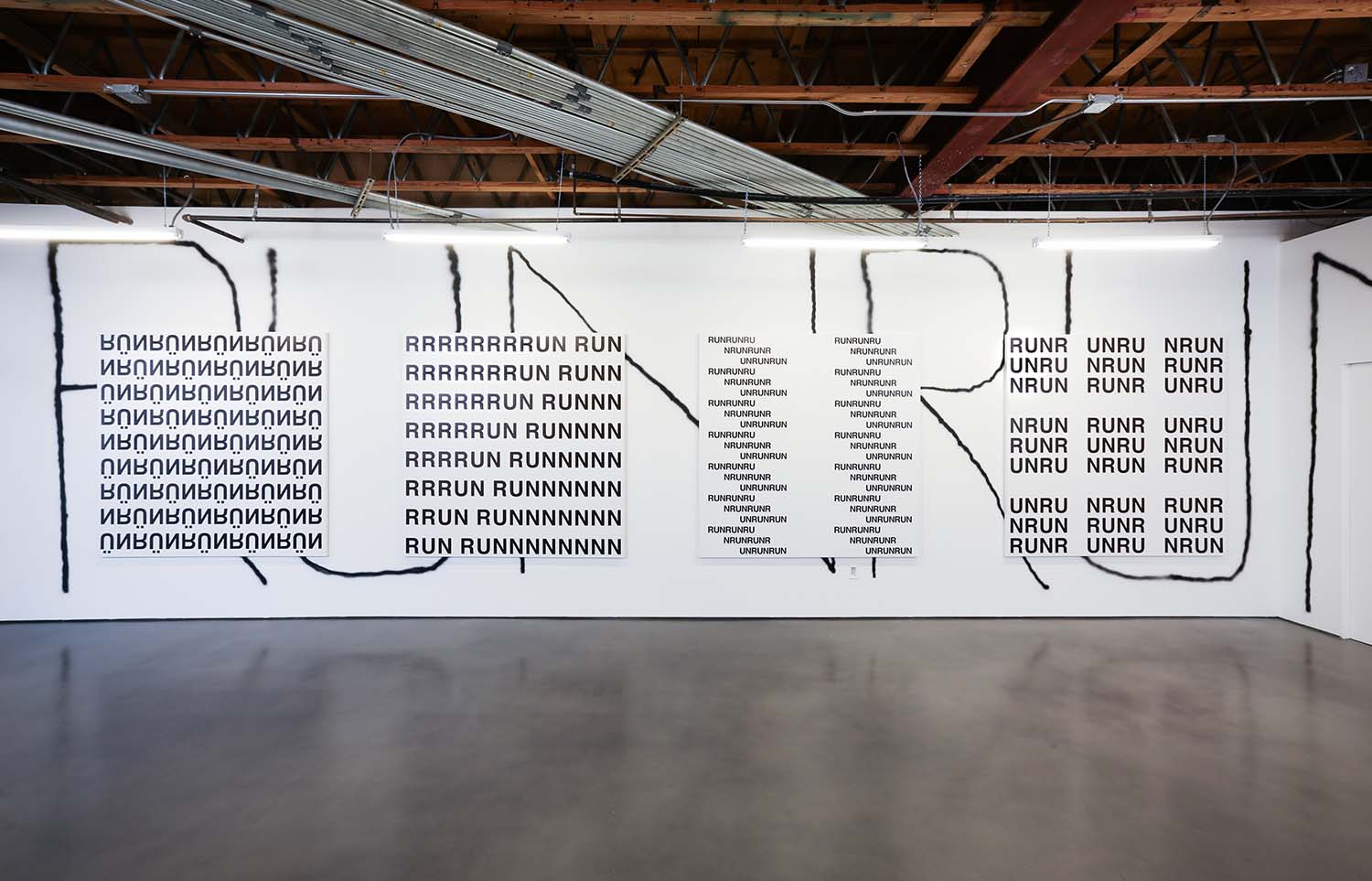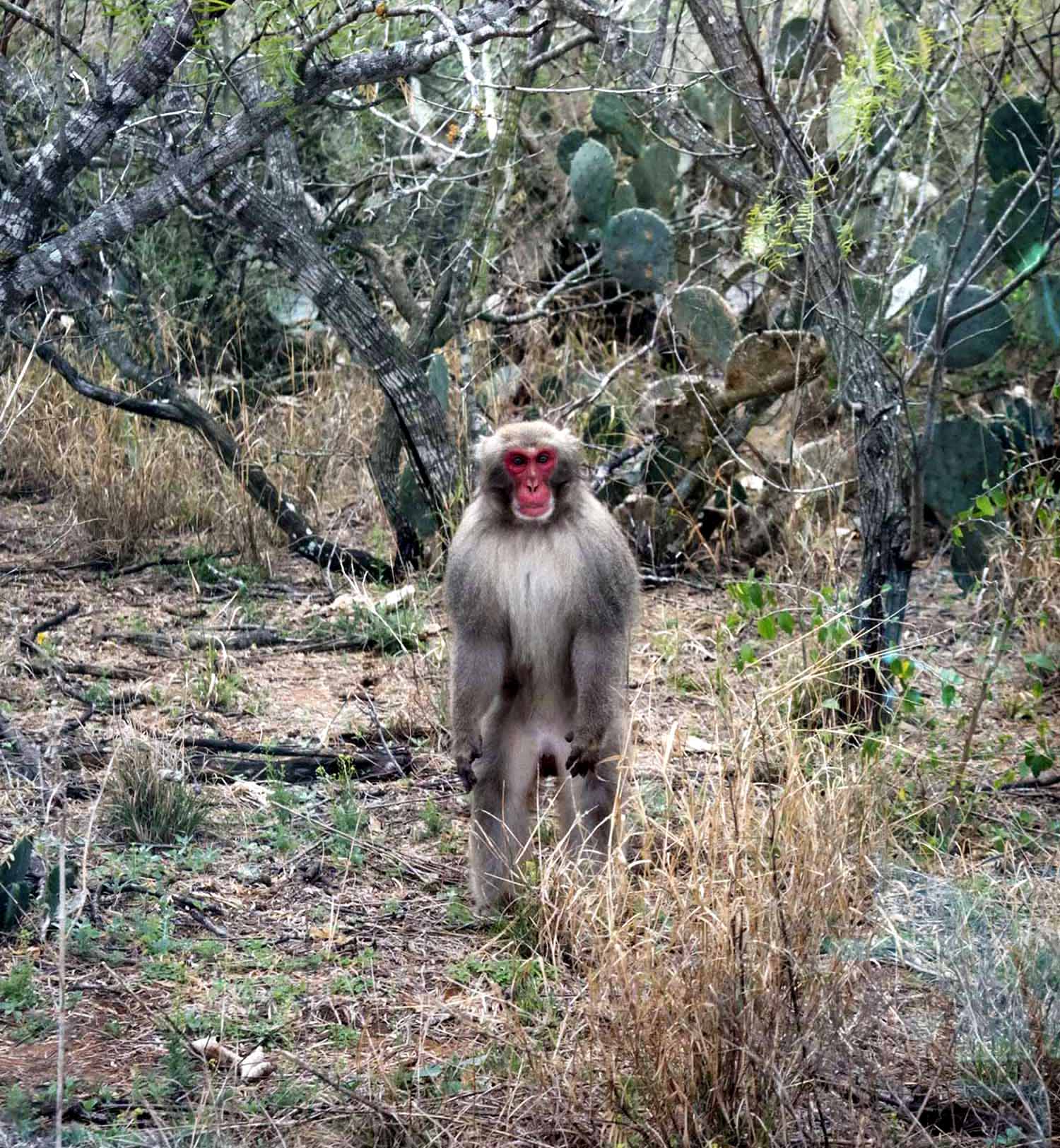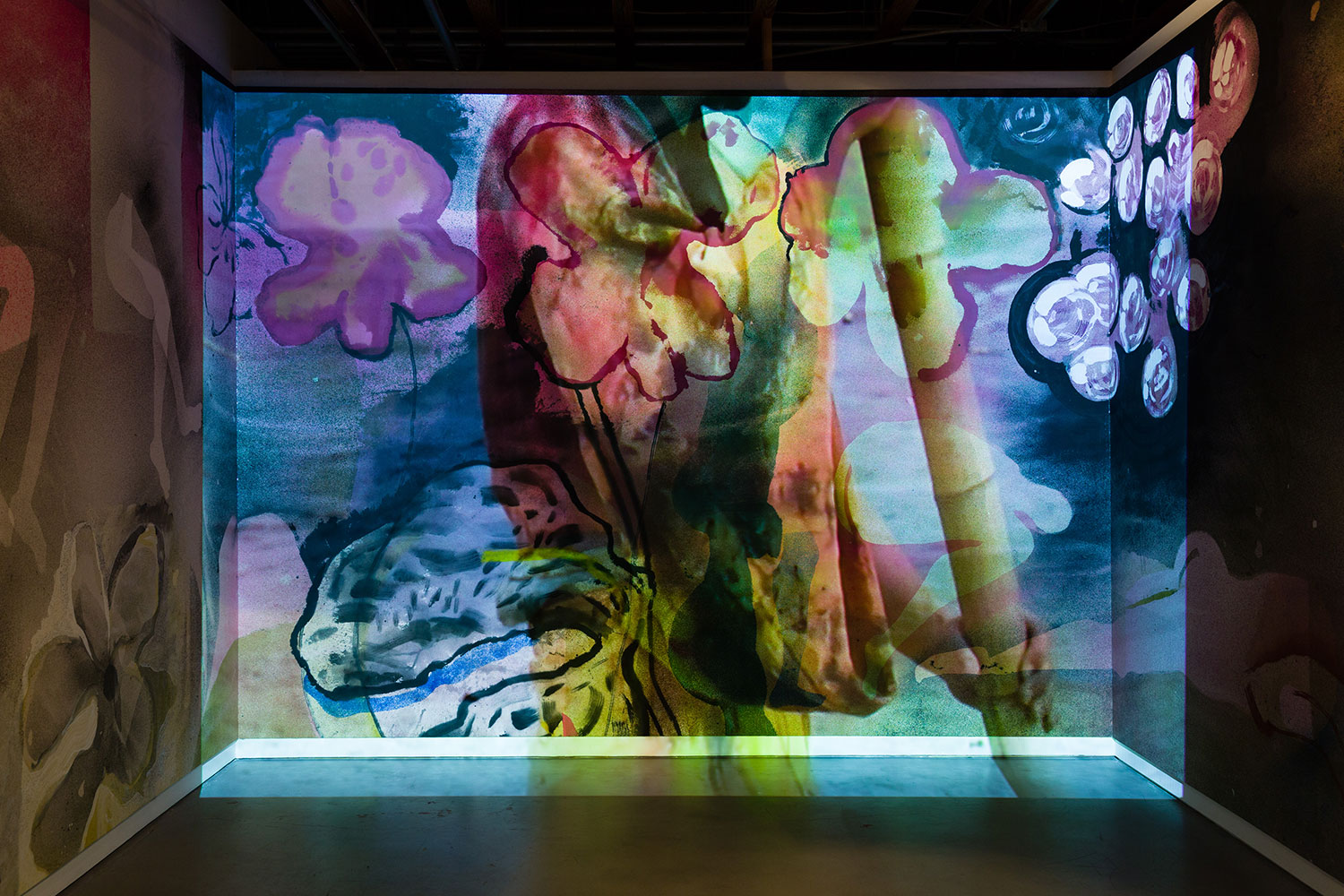“STURTEVANT: MEMES” at Freedman Fitzpatrick is the artist’s first solo exhibition to be mounted in Los Angeles since her death in 2014. Operationally elegant and technically precise, it consists of thirteen short videos that play one after the other across eighteen plasma-screen monitors before they shut off and a two-channel projection frictionlessly commences — a process that might occur many times within a single viewing. The show’s infrastructure certainly recalls if not directly references Sturtevant’s Dillinger Running Series (2000), in which images of the artist running while dressed as John Dillinger are themselves made to run across the exhibition space’s walls by the placement of a projector atop a rotating platform. She described the gesture as the imposition of “extrinsic movement” on “intrinsic movement,” the proposition that through action she might be able to articulate the often-invisible power, beauty, and agility of thought.
In the mid-1960s Sturtevant began to repeat the works of her not-yet-notable contemporaries. Much has been made of the fact that the artists whose work Sturtevant chose to so diligently reproduce in those years — among them Jasper Johns, Andy Warhol, Roy Lichtenstein, and Frank Stella — went on to have an undeniable influence on the visual culture of the twentieth and twenty-first centuries, but had, importantly, not yet commanded serious recognition. The implication of this observation is that these works (those of artists like Johns, Warhol, Lichtenstein, and Stella) remain salient not primarily because of the way the movement of history has been cathected onto them, a quality only evident retrospectively, but instead because of a certain immanent greatness that was obvious to Sturtevant even from their inception. Indeed, the explicit conceit of these repetitions was to render perceptible “the silent power of art,” what Sturtevant often referred to as its “invisible understructure.” The relevance of Sturtevant’s early repetitions to the body of video work that began thirty years later, in the mid-1990s, is one of strategy; they share a procedural similarity. Sturtevant’s video works near identically repeat, not appropriate, the moving images that express the will of their episteme, and like the artworks she repeated, these video repetitions similarly anticipate or prefigure the dominance of a new mode of visual expression and assembly, which the exhibition’s title asks us to understand broadly as the meme. That Sturtevant’s focus turned to anonymous found footage and imagineered graphics in the mid-1990s itself signals a paradigmatic shift from the hegemony of the visual production of individual fine artists to general cultural output.
A donut breaks the celestial horizon; Mickey Mouse’s hand careens out of an ass crack waving obediently; cash is splayed out like a fan; Pac-Man navigates the labyrinth; an owl pivots its head. These images, disengaged from the economies they both circulate in and are the products of, are refashioned by the artist to more potently demonstrate the misery, boredom, manipulation, emptiness, and violence contemporary technics have inflicted in new and novel ways on our experience of life. The videos do so through a considered reorganization of their component parts that leaves the final works similar to the sensory-overload-inducing stream of content we are incessantly inundated by, but more significantly estranged from, as the process of repetition always involves the introduction of difference. It is the partial success of their illusion of familiarity that most effectively disrupts our ordinary cadences of perception, and in turn triggers a certain reversal of thinking, a cutting open of understanding. Sturtevant obstructs apprehension — that often-unnoticed undertaking that transforms and synthesizes vast amounts of visual data into constructions cobbled together into shared realities. This impediment to unexamined thought is particularly necessary in a time when the human process of observation, evaluation, and cognition has through artificial intelligence been coded into a means of mechanical conquest and capture.
The circulation of images that Sturtevant invokes is characterized by a compulsive decontextualization. To say that her videos mourn or even propose a lost capacity for originality ignores that they actively frustrate the already-agonized relation of any object to its origin. In Simulacra (2010), videos of the natural world are haunted by the haptic presence of a watermark. Her strategy is both one of deferral and of painstaking engagement, even participation — a means of securing an adjacency to the great force of thought, and its capricious essence, by stubbornly instigating and insisting on its production. In the days after seeing the show a friend shared a selection of quotes from Gilles Deleuze’s Difference and Repetition, originally published in 1968 a few years after Sturtevant began her own project of repetition: “Repetition as a conduct and as a point of view concerns non-exchangeable […] singularities.” “The heart is the amorous organ of repetition.” “If exchange is the criterion of generality, theft and gift are those of repetition.” It seems to me Sturtevant’s work is engaged in an ongoing practice of distinctly generous and generative grand larceny wherein the force of thought emerges only as a function of its own dispossession or expropriation.

